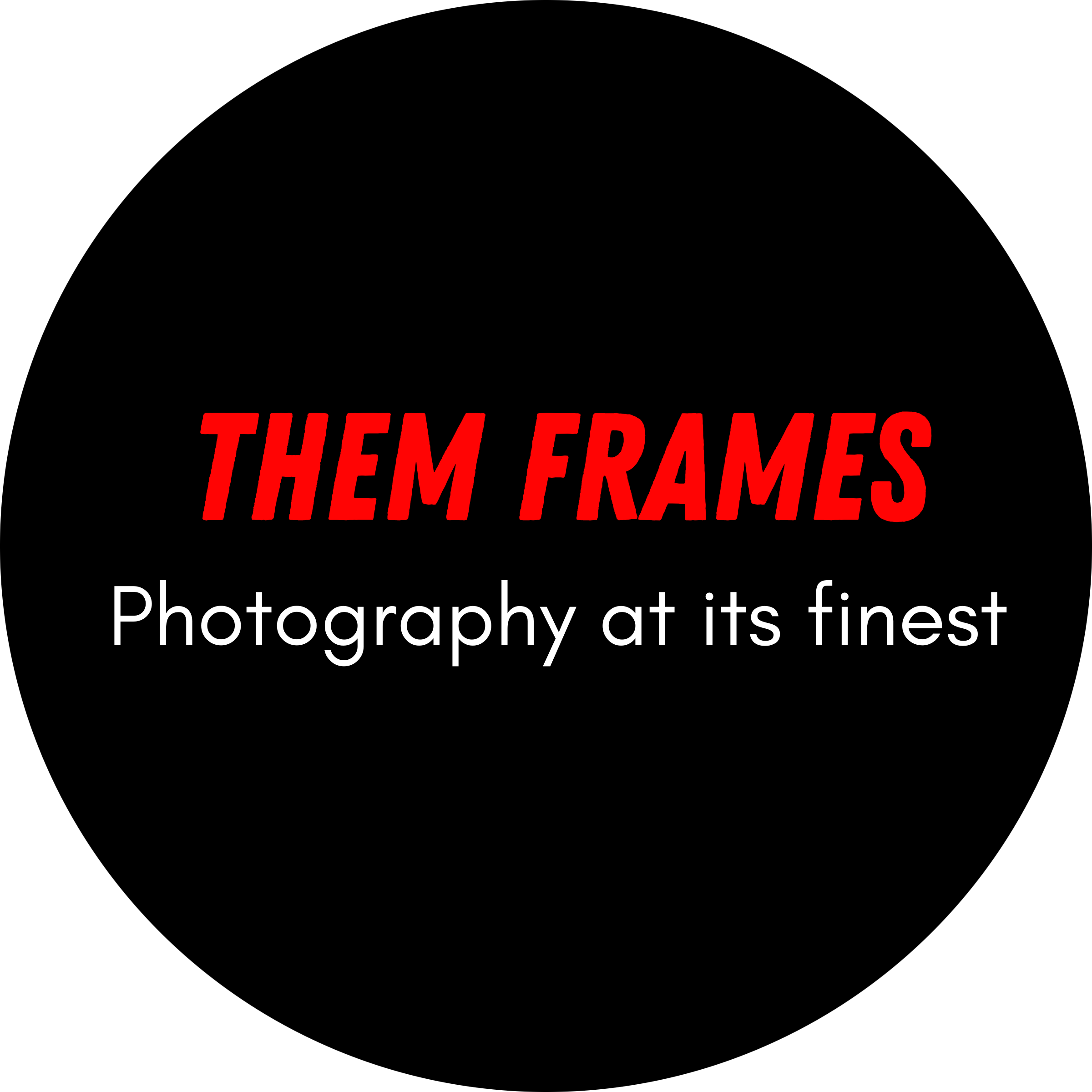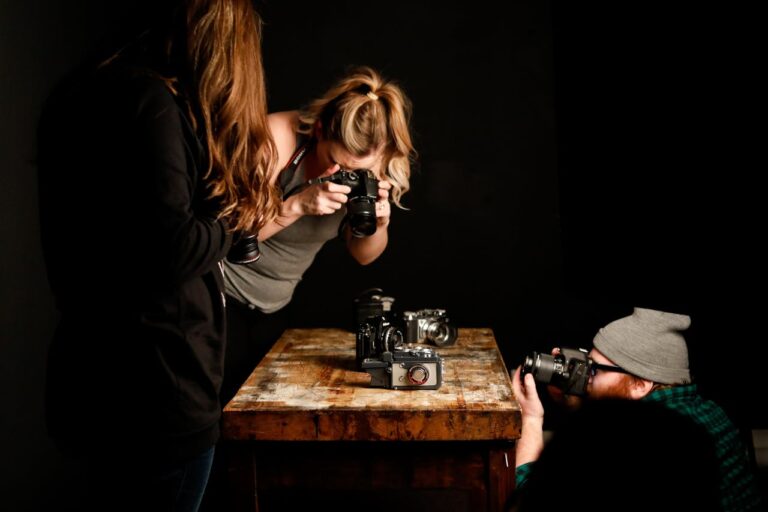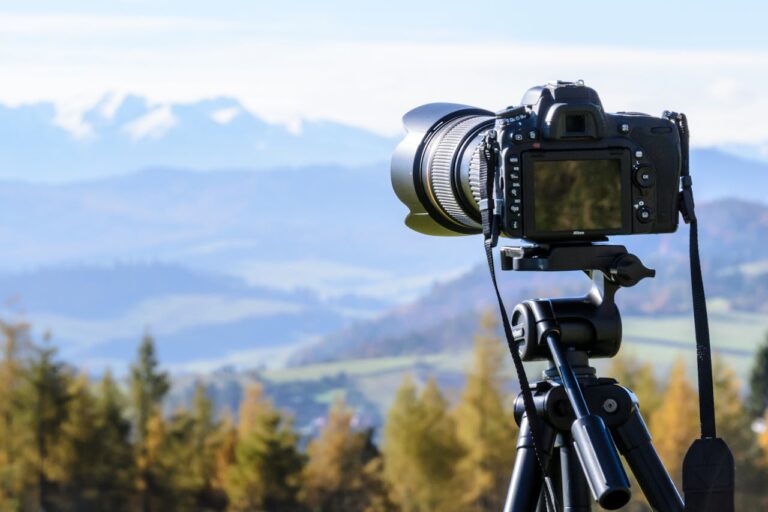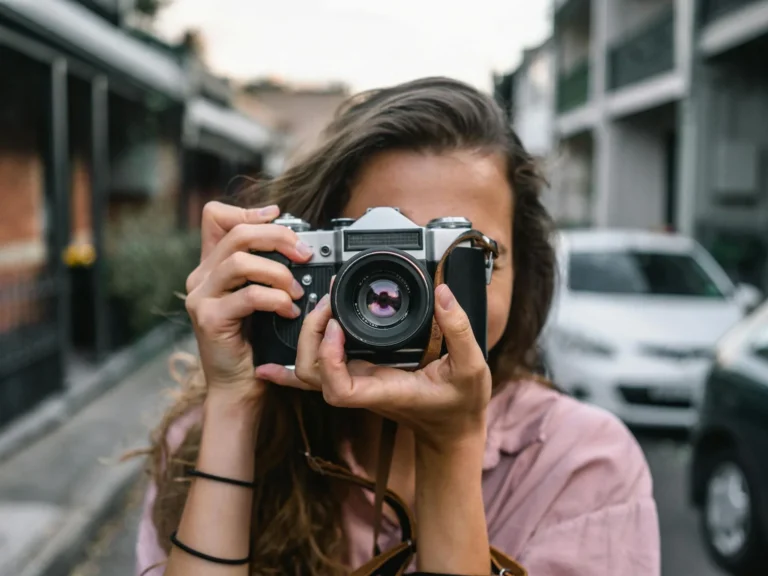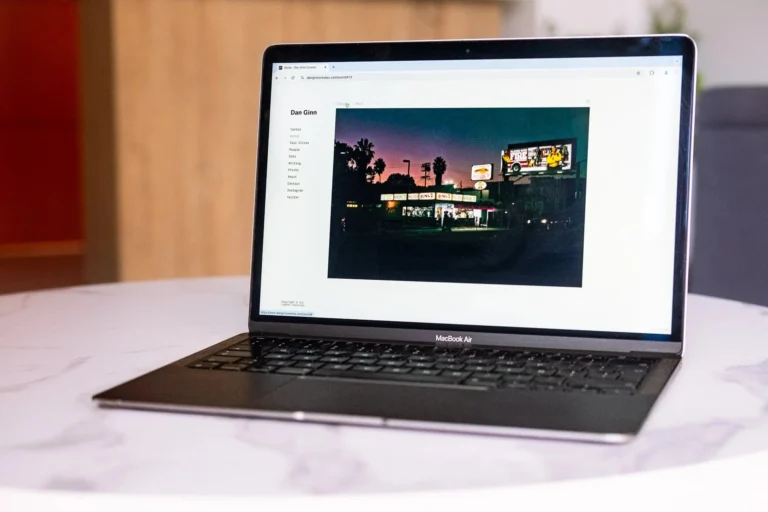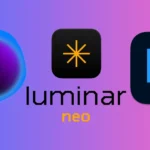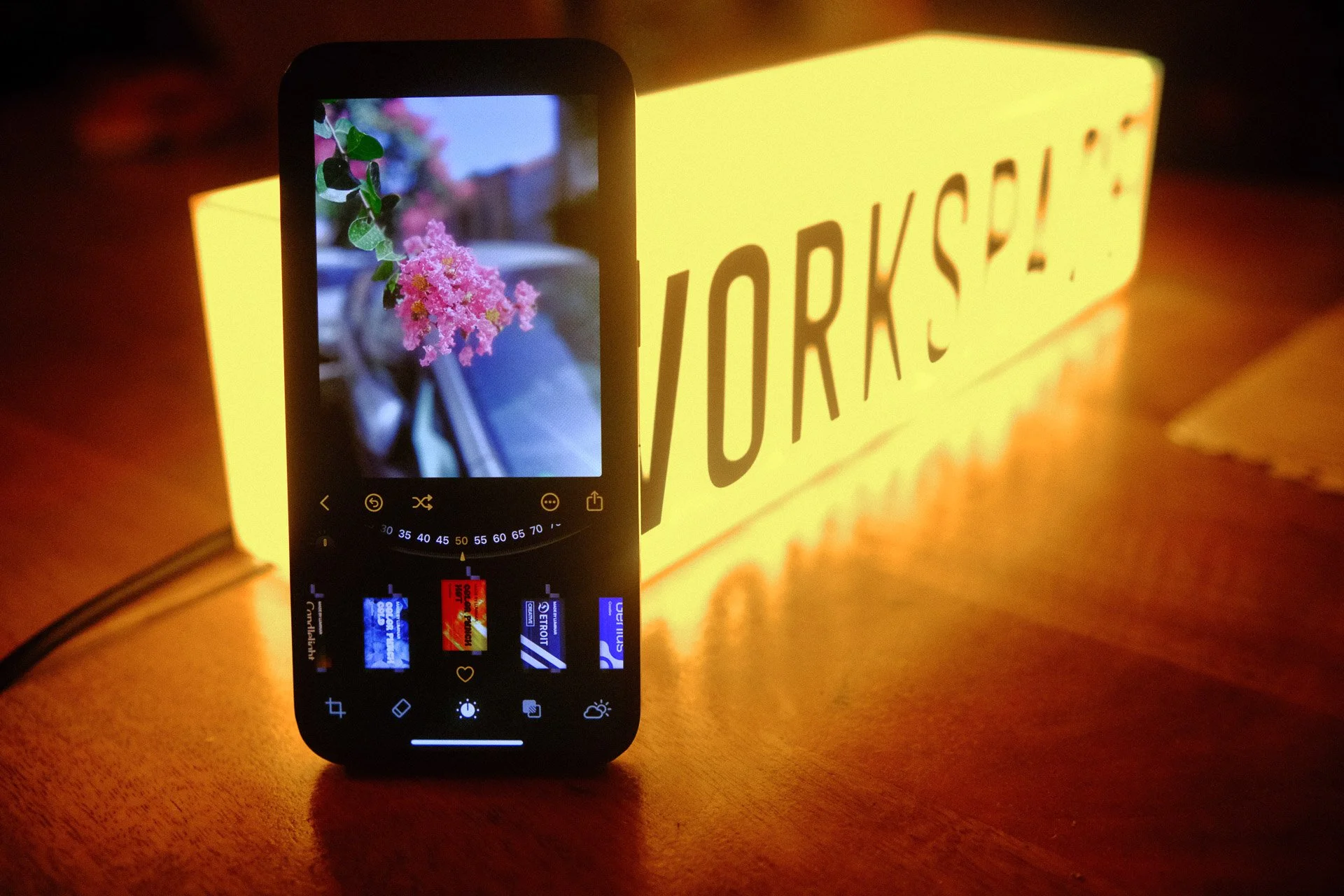
Photo editing has never been more accessible, or more overwhelming. With dozens of tools promising pro-level results in minutes, it’s easy to lose track of what’s actually worth using. That’s why I tested and compared this year’s top contenders to find out what really are the best photo editing apps in 2025.
Whether you’re editing casually for Instagram or fine-tuning shots for your portfolio, this guide will help you cut through the noise and find the right tool for the job. I’m not just listing features, I used every app personally, on real images, to see how they actually perform and to ensure there’s an option for every type of photographer.
How I Selected the Best Photo Editing Apps
Because these apps are mainly for smartphone use, I decided to shoot the images on my iPhone 13. This gives more of a real world work flow: take the shot, make the edit, share it on social media. Although these apps are the best photo editing apps for iOS, most of them have Android versions as well.
Honestly, if you don’t shoot with a smartphone and use a dedicated camera, I recommend editing on desktop, especially for client work. The extra detail in the frames comes to life on a larger screen, and for that I encourage you to check out my selection of the best photo editing software in 2025.
Bitesize Opinion: Luminar Neo is the Best Photo Editing App
If you’re looking for the best photo editing app overall, Luminar Neo ticks the most boxes. It’s fun, intuitive, and surprisingly powerful. You get pro-level results without needing a pro-level skillset—and without needing to get locked into a subscription. Most importantly, it makes editing feel creative again instead of like a chore.
Why I recommend Luminar Neo:
-
It’s fun to use and gives great results.
-
Creative, film-style filters that actually feel different from one another
-
Intuitive AI tools that help bring your creativity to life
-
You can pay once and own it forever.
Want to stop scrolling and start creating? Try Luminar Neo today and bring your photos to life—sign up here. Use promo code THEMFRAMES10 to get a discount!
Luminar Neo: Best Photo Editing Apps for Most Users
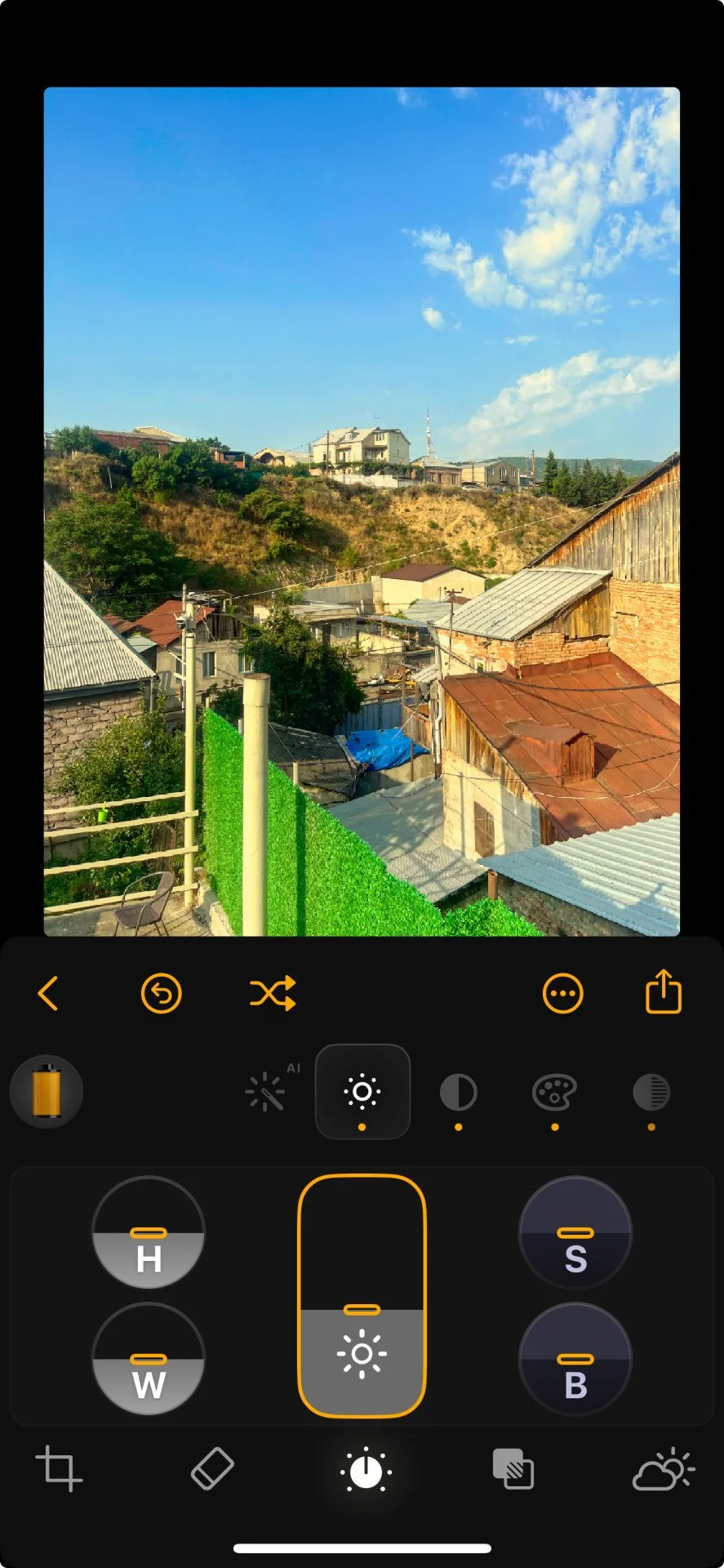
Editing with Luminar Neo felt more like play than work. That’s not a bad thing because when an app makes the process enjoyable, you’re more likely to explore, tweak, and actually finish your edits.
The film-style filters are impressive. They’re grouped into creative categories like portrait and cinematic, and unlike a lot of apps, the presets here actually have distinct differences. Each one changes the tone and mood noticeably, which gives you real variety. I also liked that I could save my own edits as custom presets, which is great for building a consistent look.
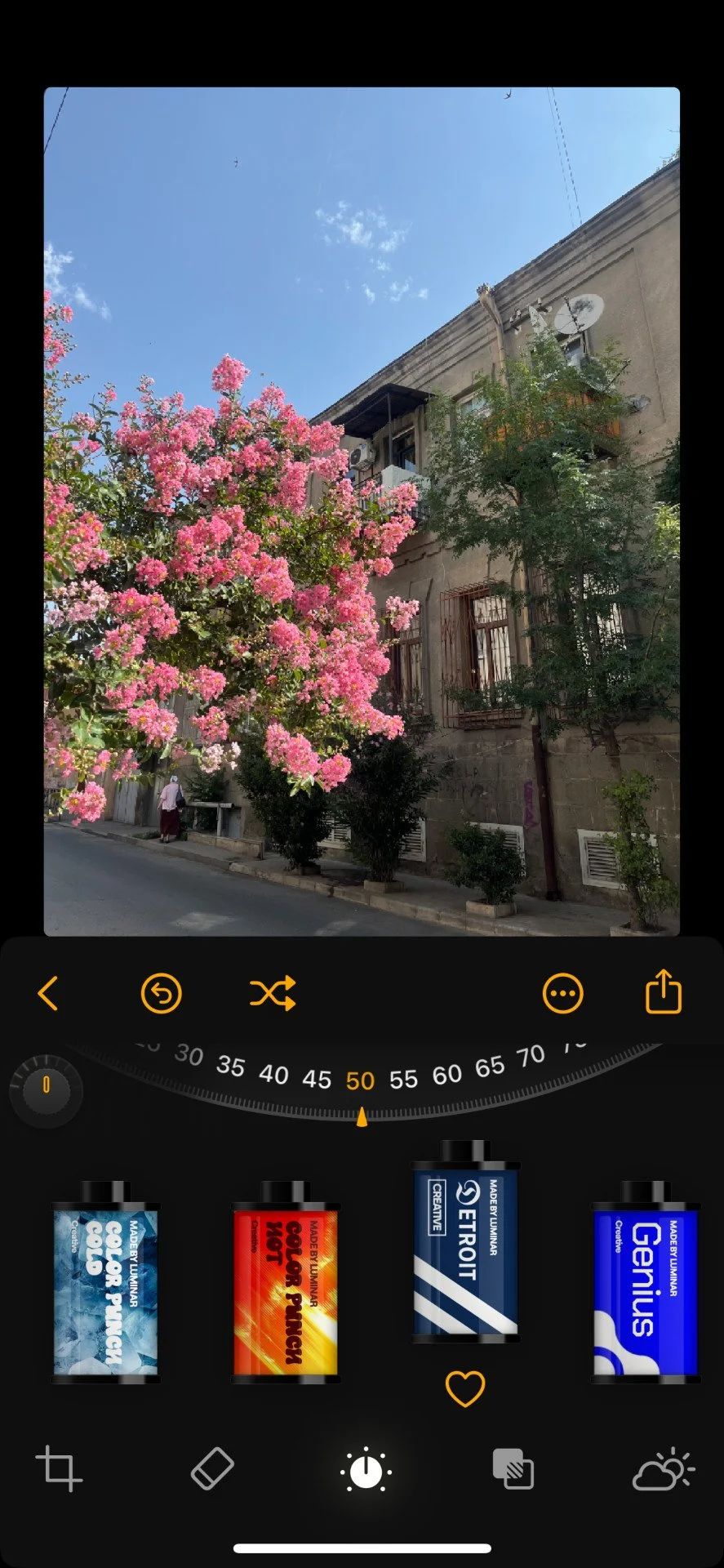
One standout feature is the Auto Edit button. A single tap adjusts things like exposure and contrast, without taking away the original feel of the image. For quick edits, it’s ideal, but likely won’t be enough for those who prefer more granular control of their edits.
What really surprised me was how polished the whole experience feels. The UI design is responsive, the toggles behave exactly how you want them to (if you’ve ever had a slider move when you lift your finger, you know how annoying that is), and the subtle haptic feedback makes it feel immersive.
It’s also more powerful than you’d expect for a mobile app. There’s a full curve tool for RGB, and a sky replacement tool that swaps skies in a tap – more of a fun feature than a purist one, but still impressive.
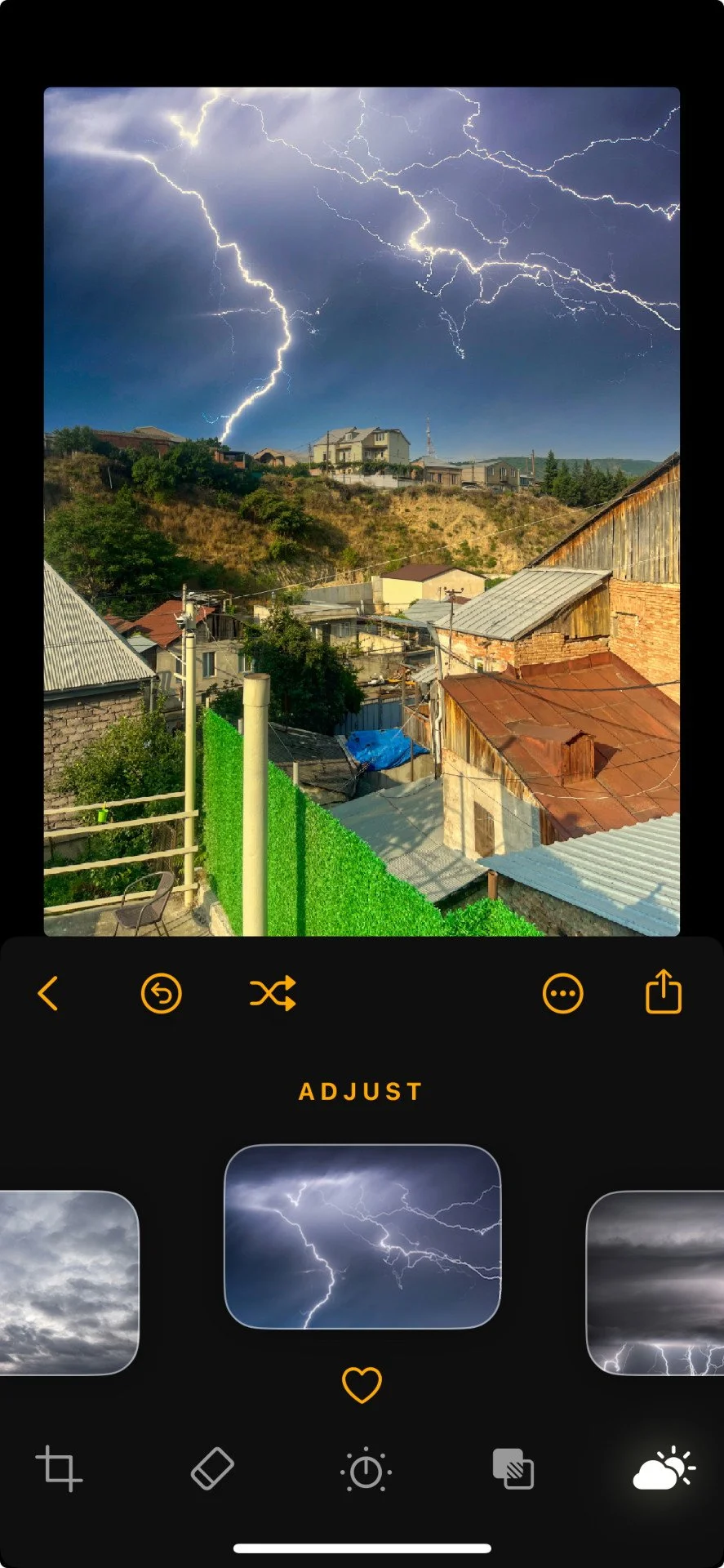
In my experience the asking price it’s refreshingly reasonable. You can grab the mobile version for around $40 as a one-time purchase, or upgrade to the full desktop + mobile bundle for $159, which I recommend if you do any editing beyond your phone.
Lightroom Mobile: Best Cloud-Based Photo Editing App
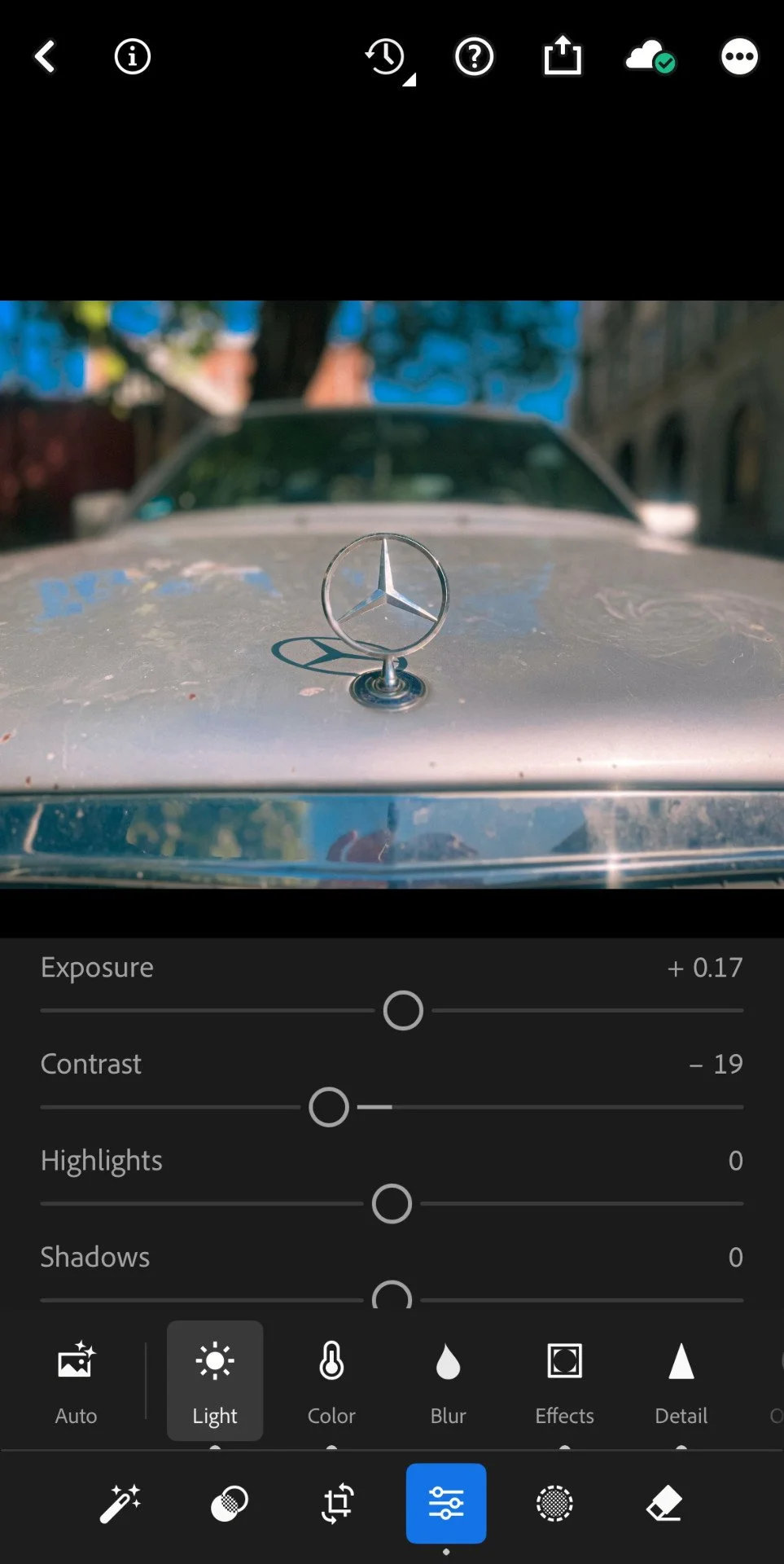
I’ve used Lightroom for years, and the mobile app fits nicely into the Adobe ecosystem. The biggest perk is the Creative Cloud sync; I could start editing an image on my phone and finish it later on my desktop. That kind of flexibility is a big deal when you’re traveling or shooting regularly.
All my personal presets were available on mobile, which kept things consistent across edits. And the core tools: exposure, contrast, highlights, shadows, are smooth and precise.
You can also correct lens distortion and remove chromatic aberration, something not many mobile apps offer.
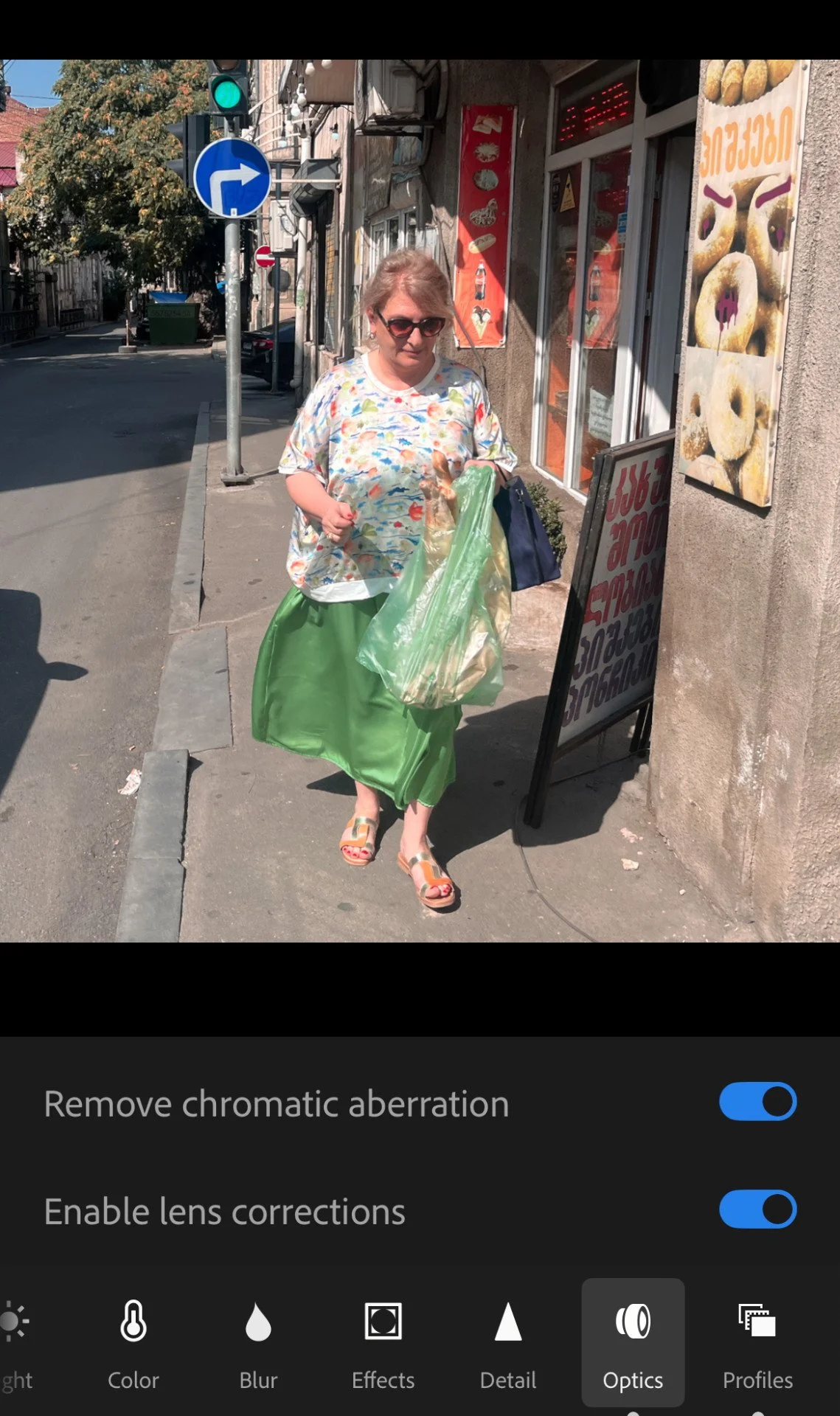
That said, Lightroom Mobile doesn’t feel as fun to use as Luminar Neo. It’s more of a pro-grade utility, and I found myself treating it more seriously, which isn’t always what I want from a photo editing app.
If you’re a professional, I’d still say Lightroom on desktop is your best bet, it’s simply more powerful and has more advanced masking features and AI capabilities. And while Lightroom Mobile is solid, the subscription model can be off-putting.
There’s no one-time purchase, and although the plan includes 1TB of cloud storage, it’s not as much as you can get from the best cloud storage for photographers. Pricing for mobile and desktop is $11.99 per month,. There’s also an option to use a watered down free version as well.
Related: Best Lightroom Alternatives
Continue reading…
Snapseed: Best Free Photo Editing App

Snapseed is hands-down the best free photo editor I’ve used. The first thing I noticed was the clean, minimalist design. The fonts are easy to read, the layout makes sense, and the whole thing feels calming. It really made me slow down and enjoy the full editing process.
The Selective Tool is a standout feature. I could tap on any part of an image and adjust that area only. I found this to be perfect for making certain elements of the frame pop or for adjusting skin tones without changing the rest of the photo.
Some UI quirks slowed things down. Switching between tools like exposure and contrast means diving into a drop-down menu, which isn’t ideal. There was also some minor lag when adjusting sliders, though not enough to ruin the experience.

Snapseed also includes some creative tools like double exposure, curve controls, and even the ability to add frames for a stylized look. It’s not a pro-grade app, but for casual users posting to social media, or those on a budget, it’s incredibly capable.
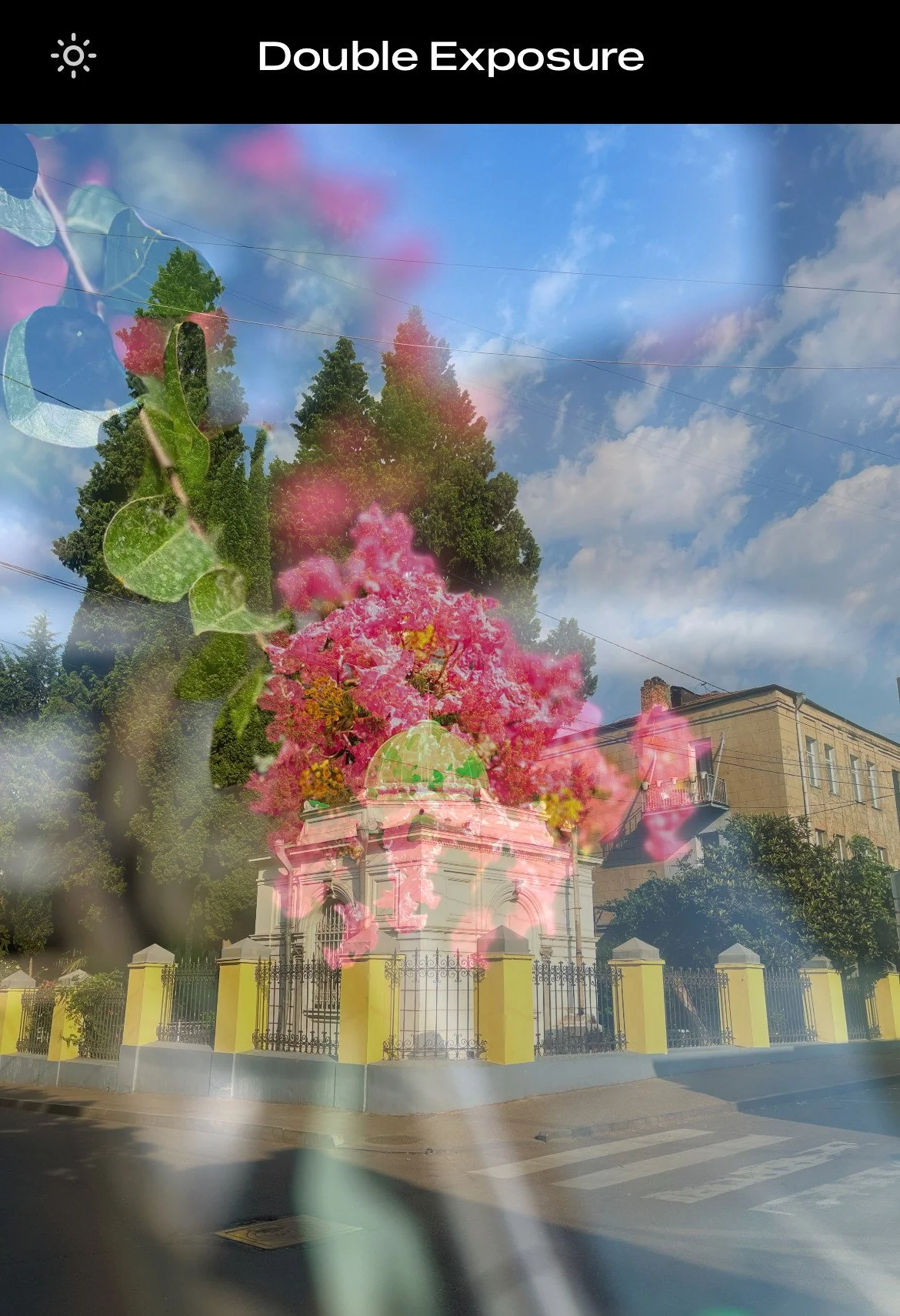
And again: it’s free and more powerful than my standard Photos app on iPhone. That alone makes it worth a download.
Leica Lux: Best Photo Editing App for Making Photos
Leica Lux is a different kind of app. Rather than focusing on post-processing, it’s built to replace your iPhone’s stock camera app, and it does a solid job of it.
You can pair it with the Leica Lux Grip, however, I don’t own one so I just used my iPhone as standard. It does feel like using a camera in all fairness, like having real-time exposure control, manual focus and preset “Leica Looks”.
You also get tools like a histogram, focus peaking, and compositional grids, which help dial in the shot before you even press the shutter.
Now, let me be clear…this won’t make your photos look like they came from a Leica Q3. But the Leica Look filters add a distinctive vibe, and they do a better job than most mobile filters I’ve tried.
The catch is that this app is really only for people who want to get it right in camera. It’s not a heavy-duty editor or an after-the-fact tool. If you want to finesse your photos after the fact, go with something else on this list.
Pricing is $6.99/month or $69.99/year, with no lifetime option. If you’re a Leica fan, it might be worth it. Otherwise, better value options exist.
Darkroom: Best Photo Editing App for Enthusiasts

Darkroom surprised me. Really, I didn’t expect this level of control from this mobile app.
It offers full color toning, HSL adjustments, and a curves tool. The sliders were responsive and easy to control. Light touches produced light results, rather than going too heavy, which I appreciated.
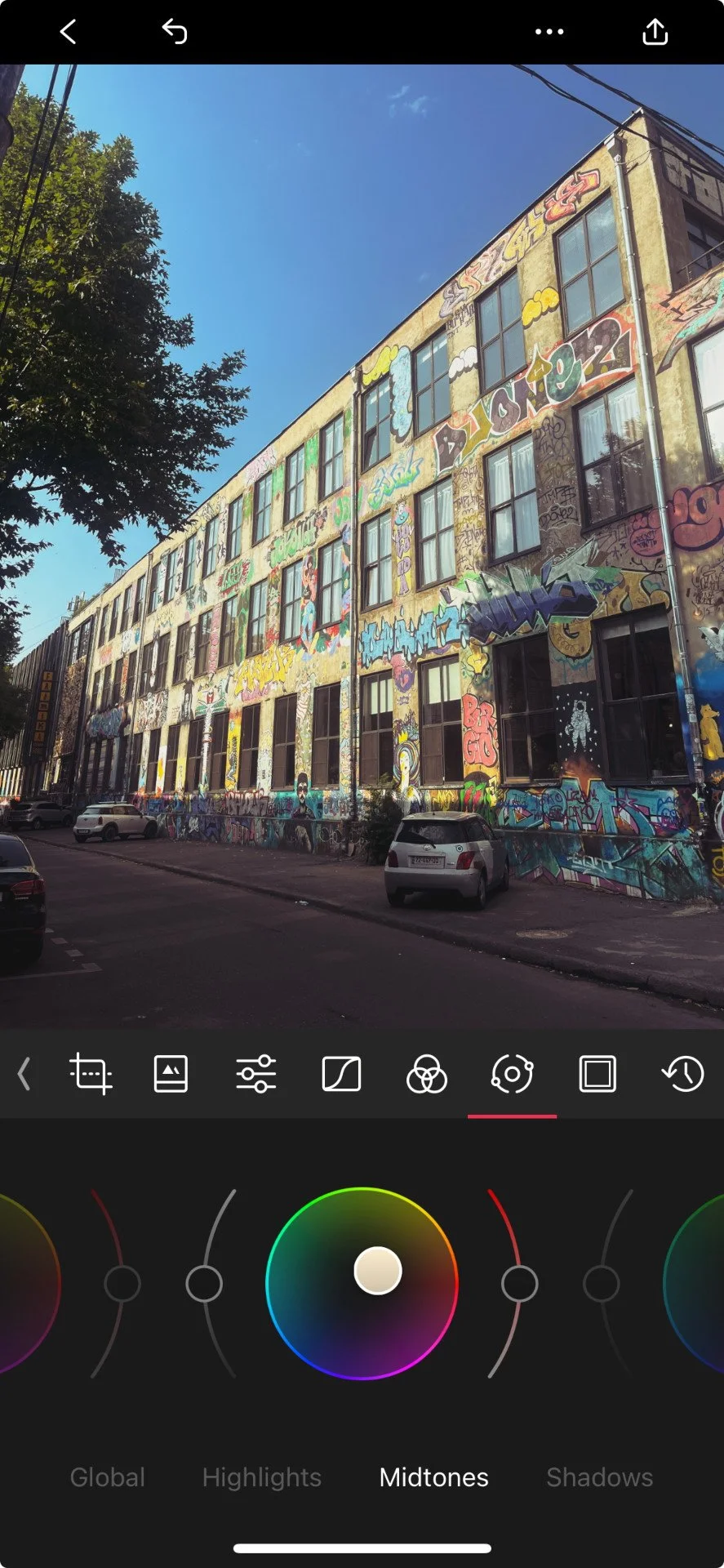
If I’m honest, filters didn’t quite hit the mark for me. They felt a bit overcooked, which some users may love, but I usually prefer more subtle edits.
Still, if you like to dive deep into tones, hues, and selective adjustments, Darkroom delivers. It’s geared toward hobbyists and enthusiasts who want more than just presets, but don’t need the full weight of a desktop suite.
Pricing is $6.99 per month, $39.99 per year, or you can pay $99.99 for a perpetual license, which is over twice as much as Luminar Neo.
Signing Off
The best photo editing app depends on how you like to work. If you want to keep things light, creative, and fast? Luminar Neo is your best bet, especially with its one-time payment and fun, responsive design. It’s powerful enough for real editing, but playful enough to actually enjoy the process.
If you’re in the Adobe ecosystem or work across multiple devices, Lightroom Mobile offers unmatched cloud syncing. For beginners or anyone on a budget, Snapseed is hard to beat. And if you’re a camera-first shooter, Leica Lux offers a refreshing shift in approach. Lastly, Darkroom is for those who want pro-level tools without the pressure of pro-level complexity.
But if you’re looking for an app that blends it all together, I keep coming back to Luminar Neo. Like I’ve said, it made editing feel fresh again. And that, to me, is worth every penny.
Grab Luminar Neo here and make your photos pop without sitting in front of your screen for hours
More reading: Best Photo Editing Software for Beginners
FAQs
Which is the no. 1 photo editing app?
Luminar Neo is my top pick for photo editing apps because it’s fun to use and offers powerful results. It can do most of the leg work for you, or give you plenty of features so you can take full control.
Which photo editing app is best for beginners?
Snapseed is a top photo editing app for beginners for two reasons. Firstly, it’s totally free so there’s no financial burden and it has enough features for you to really learn how to edit photos and bring them to life.
Is Canva good for photo editing?
For minor edits, sure Canva can work for photo editing. But for photographers looking for a dedicated app, I recommend using Luminar Neo or Lightroom.
This article contains links that if you purchase anything through them, Them Frames gets a small kick back. It helps run the site. Thank you.
Want your work featured on Them Frames? Pitch us.
